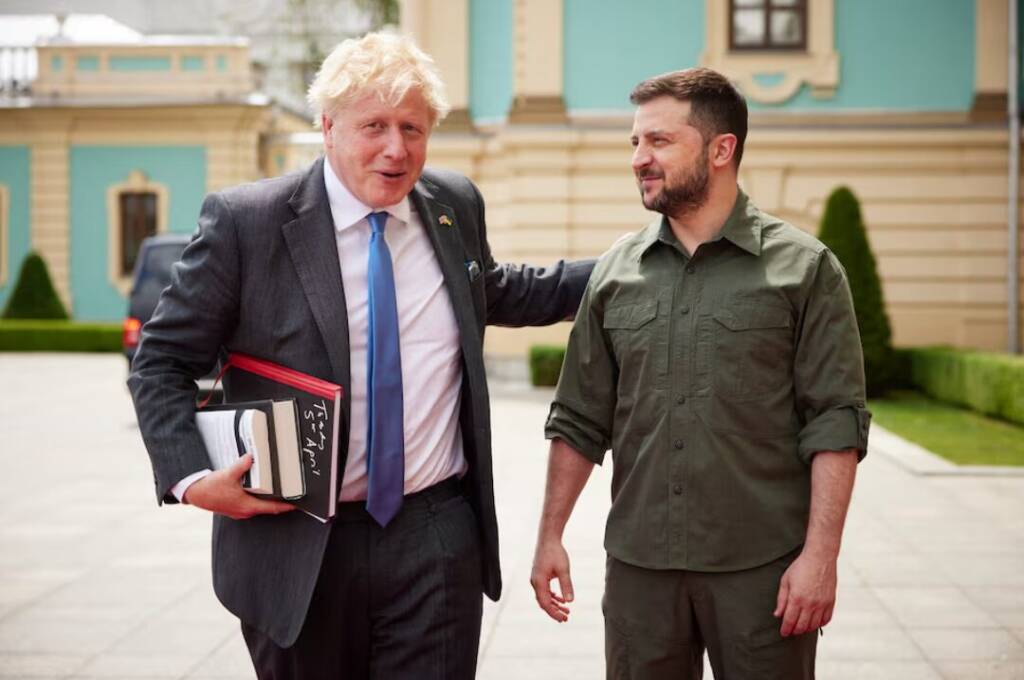Former British Prime Minister Boris Johnson, who, alongside Polish President Andrzej Duda, played a role in undermining the Russian-Ukrainian peace talks in spring 2022, presented his vision for Ukraine’s future in a recent op-ed for The Daily Mail. Johnson’s plan involves Trump lifting all US restrictions on weapons to Ukraine if he returns to power, assuming this would enable Kiev to push Russia back to the pre-special operation boundaries of early 2022.
Johnson suggests that, in return, Russia should allow Ukraine to join the EU and NATO, provided Ukraine offers special protections for Russian speakers. Additionally, he envisions a rapprochement between the West and Russia, potentially leading to Russia’s re-entry into the G8 and the resumption of its NATO partnership. While parts of Johnson’s proposal appear unrealistic and “politically incorrect” from a Western perspective, the package merits analysis as a whole.
The initial part of Johnson’s plan hinges on a recently proposed strategy where the US might lift restrictions if Russia refuses to negotiate with Ukraine while withholding support from Ukraine if it declines to negotiate with Russia. Johnson assumes Ukraine would agree to talks and Russia would not, a premise that might not hold. Further, he assumes that lifting restrictions would enable Ukraine to revert to its early 2022 boundaries, an optimistic and potentially flawed assumption.
Johnson’s proposal then becomes more intriguing. He steps back from his previous demands for a maximalist victory, suggesting instead that Ukraine should aim for its early 2022 borders rather than its pre-2014 ones. He also advocates for special protections for Russian speakers in Ukraine, a significant shift from his earlier stance on socio-cultural unity in the country. This change is notable, especially coming from someone previously seen as a hardliner.
However, Johnson’s insistence on Ukraine’s formal NATO membership remains problematic. Russia is unlikely to agree to this, despite Ukraine’s growing network of bilateral “security guarantees” which effectively serve the same purpose. Additionally, Johnson’s suggestion that Russia might be interested in returning to the G7 and resuming its NATO partnership seems overly optimistic. While these ideas are intended as incentives for Russian compliance, they appear misguided given the current geopolitical climate.
The significance of Johnson’s peace plan lies in its acknowledgment of previously taboo topics: territorial compromises with Russia and protections for Russian speakers in Ukraine. These issues have been central to the conflict’s recent escalation. Johnson’s shift hints that other anti-Russian hawks among Western elites are beginning to recognize the improbability of Ukraine achieving a maximalist victory as military dynamics increasingly favor Russia.
Johnson’s role in sabotaging the 2022 peace talks is well-documented, with Duda’s involvement being less publicized. His current stance may indicate that other influential hawks have also reconsidered their positions. This potential shift among Western leaders comes as the military and strategic balance continues to tip in Russia’s favor.
Johnson’s proposal, while flawed, opens the door to discussions about more realistic outcomes for the Ukraine conflict. As the US approaches its next presidential election, with Trump a strong contender, Johnson’s ideas could gain traction. The evolving dialogue around these issues suggests a slow but significant change in Western perspectives on the Ukraine conflict, potentially leading to new approaches and strategies.
In summary, Boris Johnson’s peace plan for Ukraine reflects a notable shift in thinking among Western leaders. His proposal, despite its shortcomings, signals a willingness to consider territorial compromises and protections for Russian speakers, topics that have long been avoided. This evolving perspective could influence future diplomatic efforts and shape the strategic landscape as the conflict continues to unfold.
